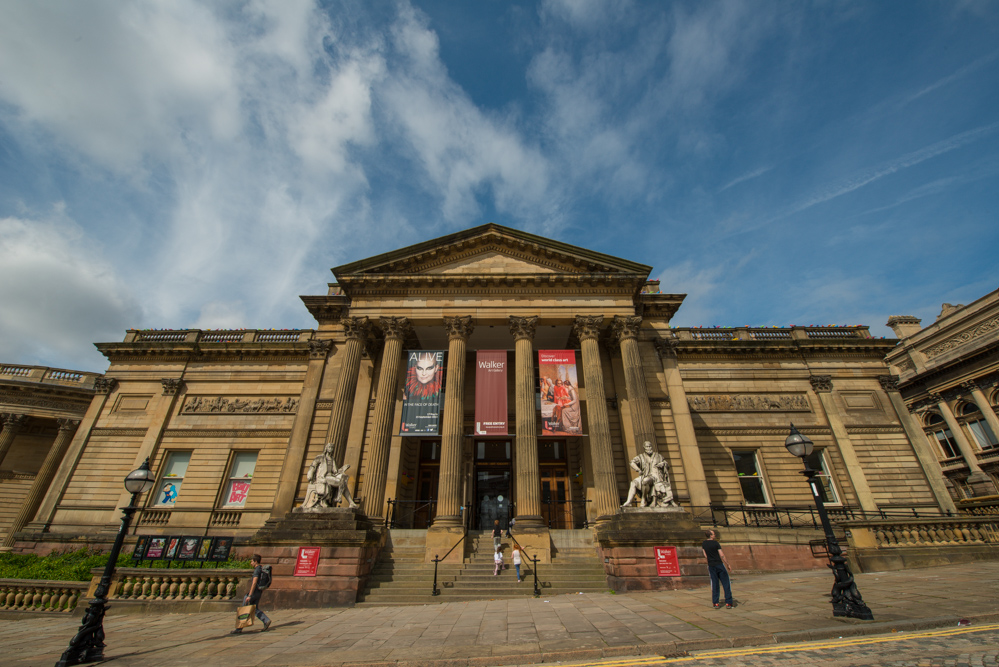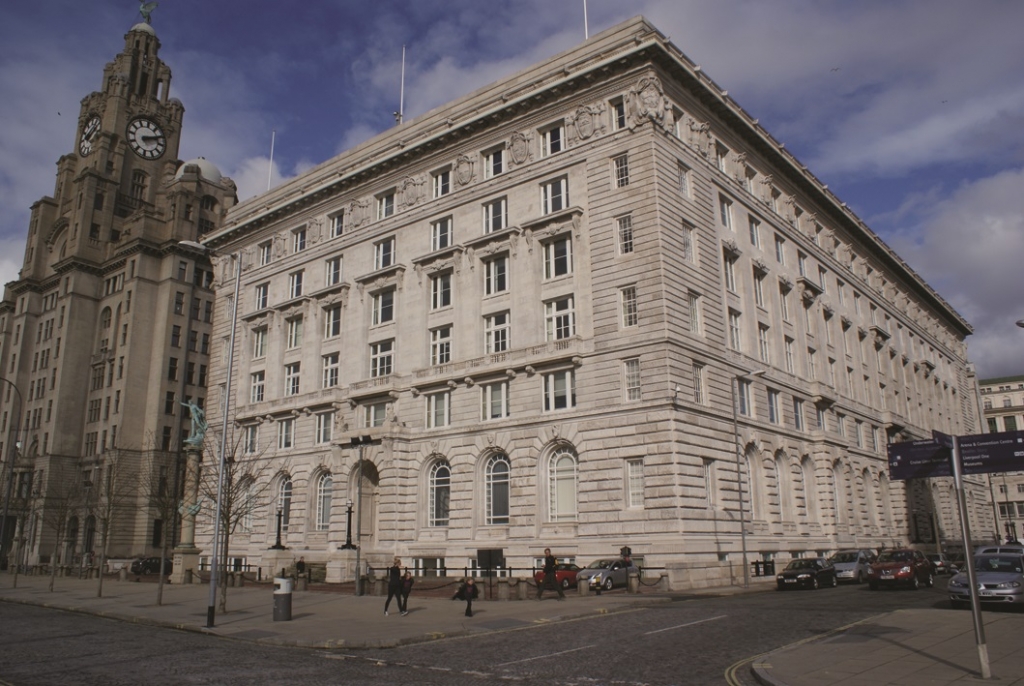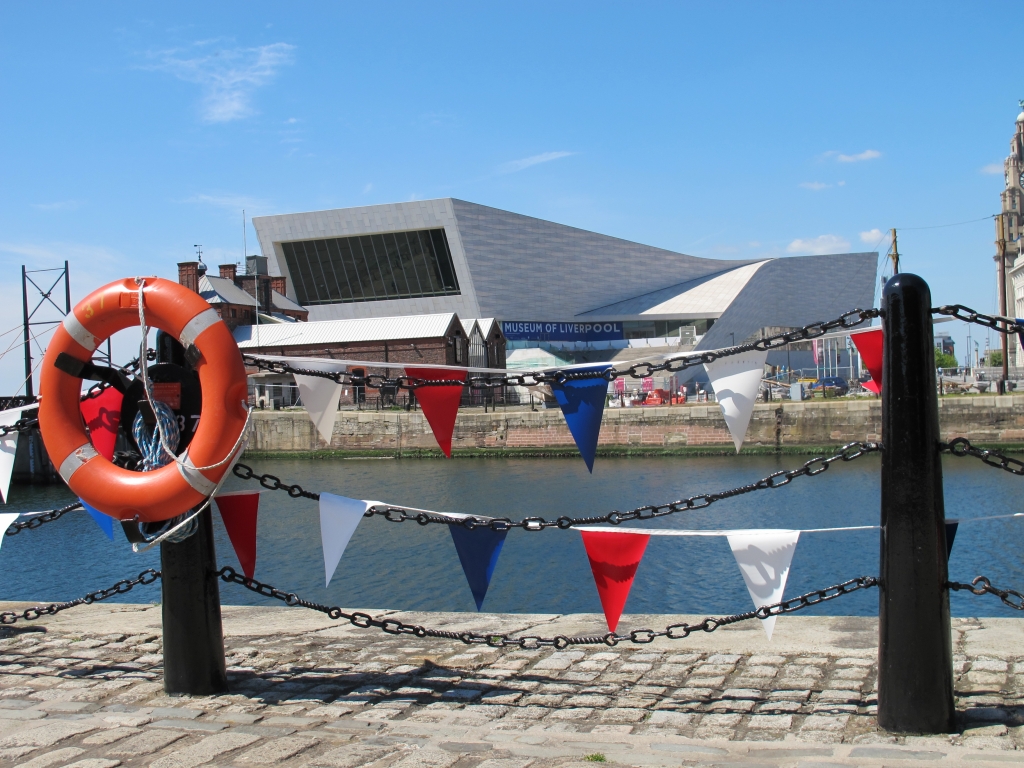Seeped in history, Liverpool is world renowned for its impressive array of architectural styles and vast number of listed buildings. We welcome and invite you to explore our wonderful city and take in the breath-taking beauty of our buildings of historic interest. The list below is a small selection to help get you going on your way – put your comfy shoes on and enjoy…
Royal Court Theatre, Roe Street
The Royal Court Theatre is a magnificent Grade II listed art-deco theatre in Liverpool’s city centre and has been a site for entertainment since 1881. Following a devastating fire in 1933, the building was re-built in 1938 with an Art Deco style. Over the past 74 years the building has been used in a variety of ways including a rock venue, a bingo hall, comedy club and of course, a theatre.
St George’s Hall, St George’s Place
St George’s Hall is widely regarded as one of the finest neo-classical buildings in the world and is a Grade I listed building. It stands at 169ft long and 74ft wide with a tunnel vaulted ceiling, the largest of its kind in Europe. The ceiling is supported on massive red granite columns, with figures portraying qualities Victorian Liverpool aspired to – art, science, fortitude and justice.
Behind the gold leaf and porticoes, the Hall has one of the greatest brick arches in the world and houses a priceless mosaic floor of 30,000 tiles. When the unique Minton tiled floor was uncovered to mark the Hall’s centenary in 1954, more than 100,000 people queued to see it.
The Hall is also home to a concert organ complete with 7,000 pipes, second only in size to the organ in the Albert Hall.
Walker Art Gallery, William Brown Street
One of the finest art galleries in Europe, the Walker Art Gallery is home to renaissance masterpieces, Tudor portraits and one of the best collections of Victorian and Pre-Raphaelite art in the country.
For 130 years it has housed Liverpool’s most outstanding art collection. Many of the gallery’s most important works have been on display in the city for nearly 200 years.
The gallery also has an outstanding display of contemporary art including work by David Hockney, Lucian Freud and Bridget Riley.
Liverpool Central Library & Archive, William Brown Street
Stunningly remodelled in 2013 the Grade II listed Central Library building is home to impressive collections built up over the last 150 years, including many rare and important examples of fine printing and book illustrations.
The Liverpool Record Office, housed within the Central Library, collects, preserves, and makes available archives and printed material relating to all aspects of the history of Liverpool. The extensive collections range from the 13th century to the present day and include records of local, national and international significance.
World Museum Liverpool, William Brown Street
The World Museum is Grade II listed and was built to house Liverpool’s natural history and archaeology collections, which originally started with a donation from the 13th Earl of Derby. The museum is home to treasures from around the world, including antiquities, botany, ethnology, zoology, geology as well an impressive aquarium, bug house and Planetarium.
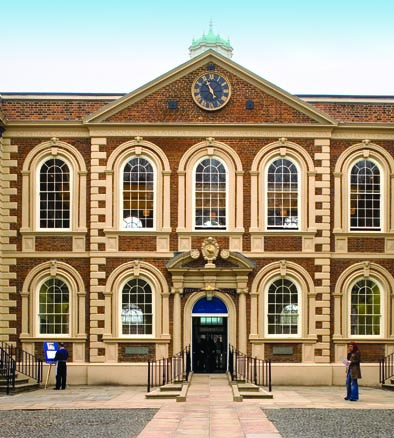 The Bluecoat, School Lane
The Bluecoat, School Lane
A hidden gem, this Grade I listed building was built in 1717 in a Queen Anne style. Almost 300 years old, the Bluecoat boasts being the oldest building in Liverpool city centre. Today it provides a creative hub for people to meet, talk, work, perform, question, create, craft and display – with the added benefit of a relaxing garden situated at the rear for everyone to enjoy.
16 Cook Street
Grade II listed, 16 Cook Street is one of two surviving buildings designed by Peter Ellis in 1866, the other being Oriel Chambers on Water Street. Built of cast iron and stone clad it has a glazed cantilevered spiral staircase in the courtyard at the rear. 16 Cook Street is said to have influenced early skyscrapers and architects including John Wellborn Roots who designed the Rookery in Chicago.
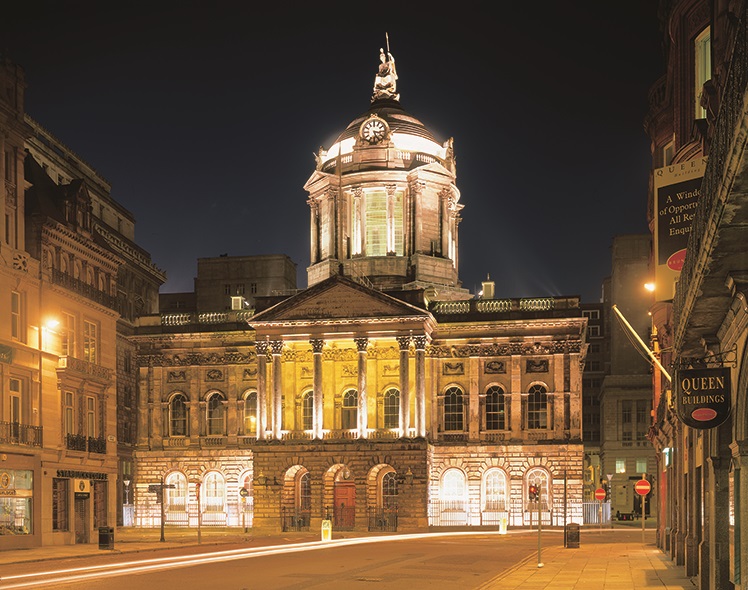 Liverpool Town Hall, High Street
Liverpool Town Hall, High Street
Constructed between 1749 and 1820, Liverpool Town Hall is a Grade I listed flagship building in the heart of the Castle Street conservation area of the city. It is one of the finest surviving 18th century Town Halls in the country and is often frequented by Royalty and visitors from all over the world.
Martins Bank, Water Street
Martins Bank is regarded as one of the finest bank buildings in the North of England. Officially opened in 1932 the building was designed on classical Roman lines by Herbert J Rowse and has a spectacular interior. It has been described as Rowse’s masterpiece and among the best interwar classical buildings in the country. During the Second World War, the bulk of England’s gold was moved to the bank’s vault.
Royal Liver Building, Water Street
The Grade I listed iconic Royal Liver Building is the outstanding jewel in Liverpool’s crown and one of the most recognised buildings in the world. Designed by Walter Aubrey Thomas in 1908 and completed in 1911 the building lies at the heart of the recently regenerated waterfront and holds over 100 years of history.
The Cunard Building, Water Street (website coming soon)
The Grade II listed Cunard Building was the last of the Three Graces to be constructed. Designed by William Willink and Phillip Thicknesse it was built as offices for the Cunard Shipping Line and is of an Italianite style popular in New York at the beginning of the 20th Century. Completed in 1917, the building cost 1 shilling and tuppence a square foot to build with an overall cost of £780,000. Outside, situated at the Pier Head side of the building, is a war memorial called Victory designed by Henry Pegram.
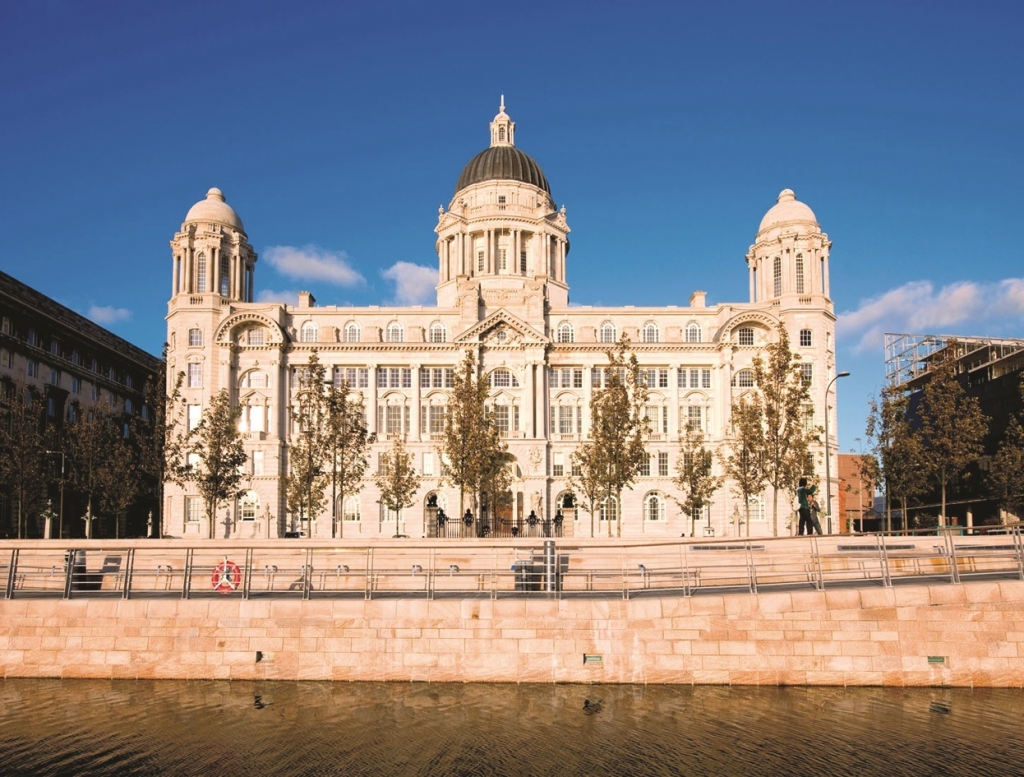 The Port of Liverpool Building, Brunswick Street
The Port of Liverpool Building, Brunswick Street
As part of Liverpool’s UNESCO designated World Heritage Site, the Grade II listed Port of Liverpool Building was the first of the Three Graces to be built and opened in 1907. The building was designed by Sir Arnold Thornley and F.B.Hobbs and developed in collaboration with Briggs and Wolstenholme. Acting as the headquarters for the Mersey Docks and Harbour Board for 87 years, the building was designed in the Edwardian Baroque style and is renowned for its large dome.
Museum of Liverpool, Pier Head
The Museum of Liverpool is the world’s first national museum devoted to the history of a regional city and the largest newly-built national museum in Britain for more than a century. Exhibits showcase popular culture and tackle social, historical and contemporary issues in an accessible, engaging manner. More than 6,000 objects bring Liverpool’s incredible heritage to life, celebrating thousands of years of the city’s achievements. Exhibits include Ben Johnson’s Liverpool Cityscape, a life-size Liverbird, the first Ford Anglia from Ford’s Halewood production line and Chris Boardman’s famous Lotus sport bike.
Merseyside Maritime Museum, Tate Liverpool & Albert Dock
The magnificent Albert Dock Liverpool is one of Britain’s top heritage attractions. Situated in an enviable location on the banks of the River Mersey, the attraction is also part of the city’s prestigious UNESCO World Heritage site. Designed by Jesse Hartley, it opened in 1846 and remained a fully working dock until closing in 1972. It later underwent a huge restoration programme and was reopened as a visitor attraction in 1988 by HRH Prince Charles. It remains the UK’s largest group of Grade I listed buildings.




